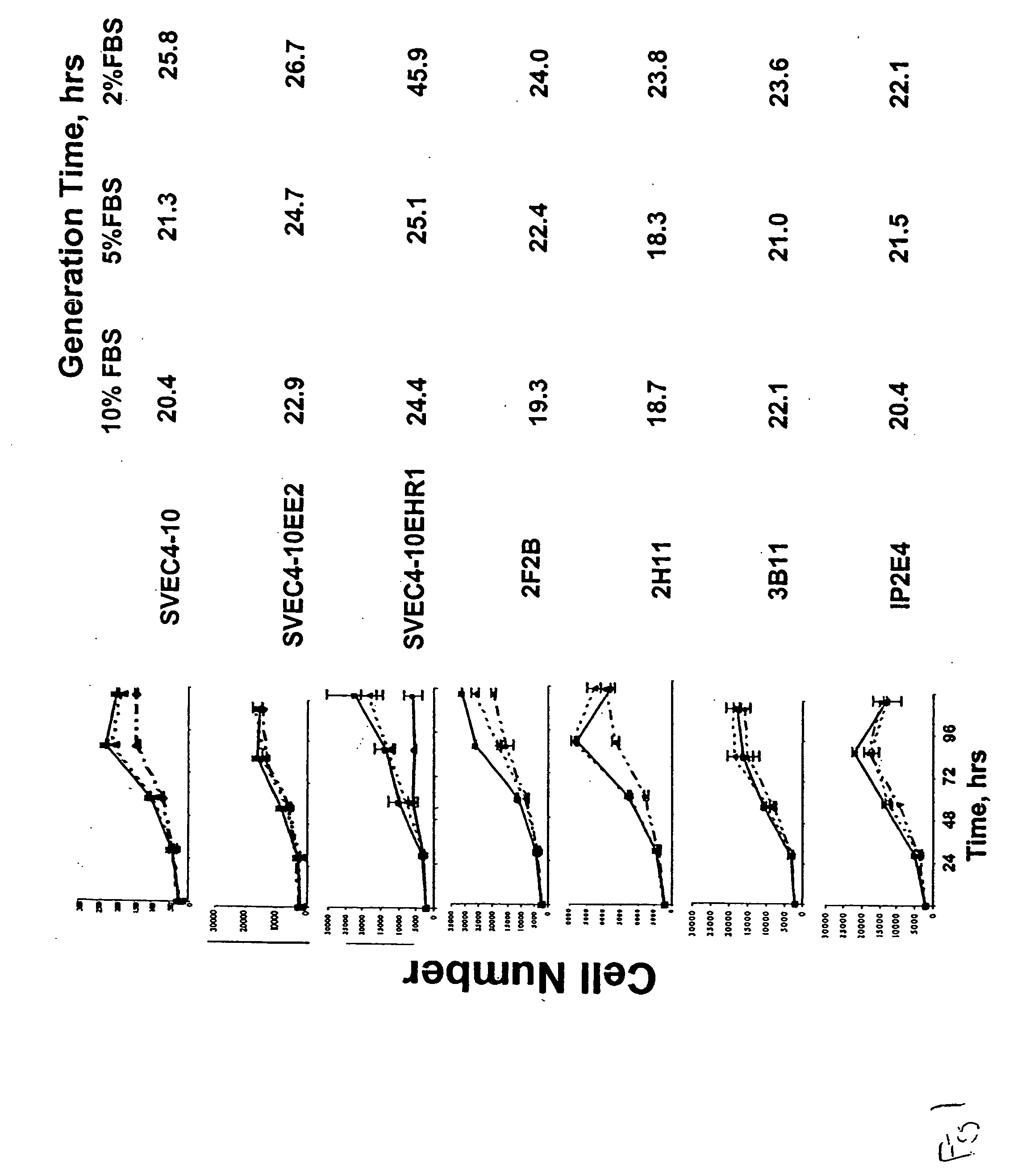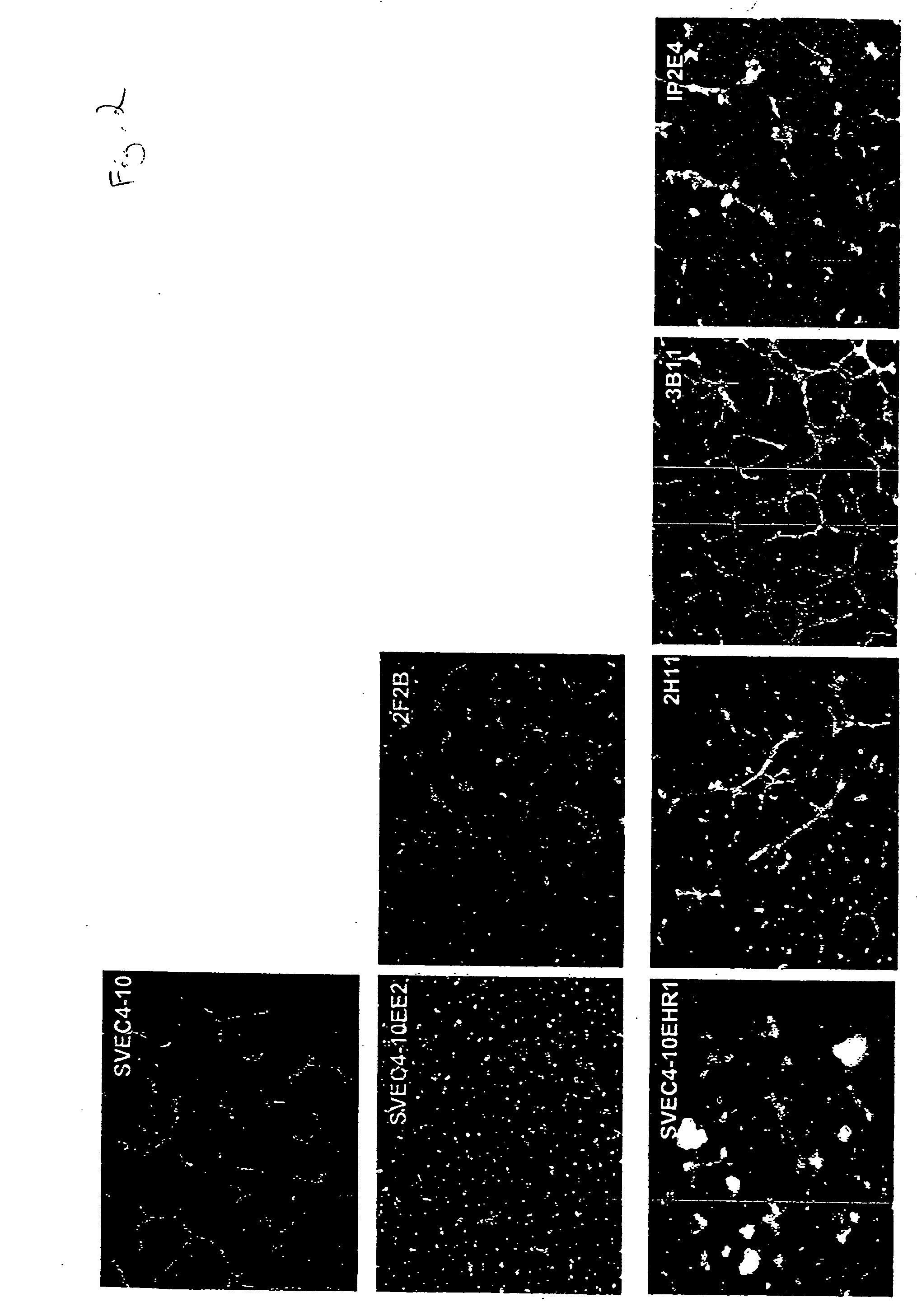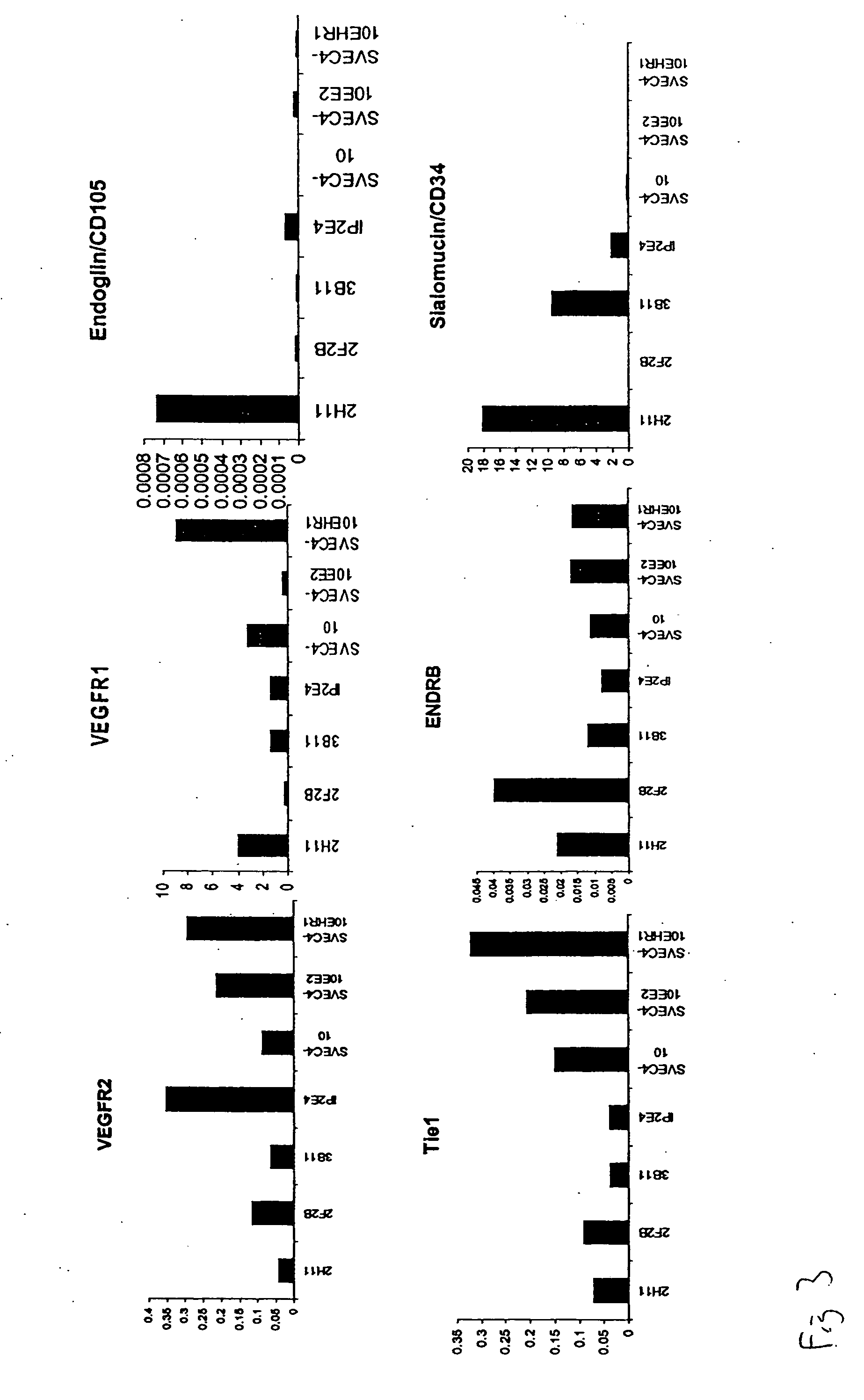Mammalian endothelial cell model systems
a technology of endothelial cells and model systems, which is applied in the field of model systems of tumor endothelial cells, can solve the problems of difficult isolation and maintenance of pure populations insufficient homology between murine and human proteins of specific molecular targets, and restricted the use of primary murine endothelial cells in angiogenesis assay systems. , to achieve the effect of reducing tubule formation, reducing tubul
- Summary
- Abstract
- Description
- Claims
- Application Information
AI Technical Summary
Benefits of technology
Problems solved by technology
Method used
Image
Examples
example 1
Murine Cell Line Evaluation
[0052] We evaluated the expression of known normal endothelial cell markers (Table 1), as well as tumor endothelial cell markers as defined by St. Croix, et al (Science, 289:1197, 2000) in several mouse endothelial cell lines. Real-time PCR and FACS analysis were used to evaluate mRNA (FIGS. 3 and 4) and protein expression of CD31, CD105, CD34, CD36, VCAM-1, CD141, ICAM1, ICAM2, EGFR, ENDRA, ENDRB, VEGFR2, VEGFR1, vWF, VE cadherin, Tie1, and Tie2 in these cells as compared to human dermal microvascular endothelial cells and human umbilical vein endothelial cells. In situ hybridization was also performed on tumor tissue from B16 and LLC syngeneic tumors to identify murine endothelial cell marker expression in vivo (FIG. 5).
[0053] Murine endothelial cell lines, SVEC4-10, SVEC4-10EE2, SVEC4-10EHR1, 2F2B, 2H11, IP1B, IP2-E4, were purchased from American Type Culture Collection (Manassas, Va.). Human dermal neonatal microvascular endothelial cells (HMVEC) and...
example 2
Cell Culture
[0067] CD34+ / AC133+ progenitor cells from human bone marrow cells, human umbilical vein endothelial cells (HUVEC) and human microvascular endothelial cells (HMVEC) were purchased from Cambrex Inc. (East Rutherford, N.J.). The CD34+ / AC133+ progenitors cells (1-2×105 cells / ml) were grown in IMDM medium (Cambrex Inc.) supplemented with 15% fetal bovine serum (Invitrogen Corporation, Carlsbad, Calif.), 50 ng / ml VEGF165 (R&D Systems, Minneapolis, Minn.), 50 ng / ml rhbFGF (R&D Systems), and 5 U / ml heparin (Sigma Chemical Co., St. Louis Mo.) on fibronectin coated flasks (BD Biosciences, Franklin Lakes, N.J.) at 37° C. with humidified 95% air / 5% CO2 to generate endothelial precursor cells (aEPC) (19, 29-31). Fresh media was added to the cultures every three to five days. The adherent cells that were generated from the original population of mixed non-adherent and adherent cells were designated aEPC. The aEPC were grown to confluency and could be passaged up to a dozen times. Aft...
example 3
[0069] The expression of cell surface proteins that are characteristically expressed on bone marrow progenitor cells and mature endothelial cells was assessed on aEPC in the presence and absence of endothelial cell associated growth factors and on HUVEC and HMVEC (Table 3). aEPC, HMVEC, and HUVEC were collected by brief exposure to 0.25% tryspin / 1 mM EDTA (Invitrogen Corporation) and washed twice in ice cold phosphate buffered 0.9% saline containing 5 mM EDTA and 5% FBS (FACs buffer). Approximately 2×10 5 cells were suspended in final volume of 100 μl of FACs buffer and incubated with a primary antibody for one hour on ice. The cells were then washed twice with FACs buffer and incubated with secondary antibody, when necessary, for 45 minutes on ice. The cells were again washed twice with FACs buffer and suspended in a final volume of 500 μl for flow cytometric analysis.
[0070] The following primary antibodies were used at a 1:20 dilution: 1.) anti-CD31-FITC (Pharminge...
PUM
 Login to View More
Login to View More Abstract
Description
Claims
Application Information
 Login to View More
Login to View More - R&D
- Intellectual Property
- Life Sciences
- Materials
- Tech Scout
- Unparalleled Data Quality
- Higher Quality Content
- 60% Fewer Hallucinations
Browse by: Latest US Patents, China's latest patents, Technical Efficacy Thesaurus, Application Domain, Technology Topic, Popular Technical Reports.
© 2025 PatSnap. All rights reserved.Legal|Privacy policy|Modern Slavery Act Transparency Statement|Sitemap|About US| Contact US: help@patsnap.com



